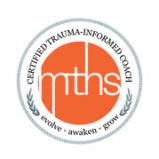
Trauma-Resilient Leadership™: A Pioneer approach for Empowering Leaders and Survivors by Transforming Workplace Dynamics in the Anti-Trafficking Movement.
As the anti-human trafficking movement evolves, leaders within this space face unique challenges in supporting and empowering survivors who are now colleagues, team members, and leaders themselves. Many of these survivors have endured profound trauma that impacts their professional journeys, and as such, traditional leadership approaches often fall short in meeting their needs effectively.
In response, Trauma-Resilient Leadership™—a pioneering framework developed to address these specific needs—has emerged as an innovative solution. This approach equips leaders with tools and insights to create work environments where trauma survivors not only feel psychologically safe but are empowered to thrive.
“When a flower doesn’t bloom, you fix the environment in which it grows, not the flower.” – Alexander Den Heijer. This quote resonates with me deeply because, as someone who has walked the path from trauma to healing, I understand the importance of a supportive environment. We can’t force growth or healing, but we can create spaces where it can flourish. The Trauma-Resilient Leadership™ approach is about fixing the environment, not the people, ensuring survivors and all employees have the conditions they need to grow and succeed.
Understanding Trauma-Resilient Leadership™
Trauma-Resilient Leadership is grounded in the S.H.I.F.T. Model™, a framework designed to support leaders as they navigate the complexities of working alongside trauma survivors and marginalized communities. While most leadership models focus on maximizing performance and meeting goals, Trauma-Resilient Leadership places equal emphasis on the emotional, psychological, and relational health of team members.
For survivors entering the workforce after experiences of exploitation, trauma-informed practices are often crucial in establishing a safe and empowering environment. The Trauma-Resilient Leadership model acknowledges this, helping leaders foster resilience, build trust, and create a work culture that respects and supports each individual’s journey.
The Core Components of the S.H.I.F.T. Model™
The S.H.I.F.T. Model™ is an acronym that stands for:
Supportive Relationships: Establishing trust through compassionate interactions and open communication.
Healing-Centered Approaches: Embracing practices that prioritize psychological safety and foster well-being.
Inclusive Leadership: Recognizing each team member’s unique experiences and creating a sense of belonging.
Flexibility and Adaptation: Allowing room for individual needs, especially for those navigating the complexities of post-trauma work.
Transparency: Building clear, honest, and respectful communication to avoid re-traumatization.
These principles are carefully integrated into everyday leadership practices, creating an adaptable approach that promotes resilience without positioning leaders as therapists. Leaders, managers, and peers learn to be trauma-aware, cultivating an environment that both respects the boundaries of professional relationships and facilitates a supportive, resilient workplace.
Why Trauma-Resilient Leadership™ Matters in Anti-Human Trafficking Work
For organizations working with survivors of human trafficking, Trauma-Resilient Leadership™ is not just a compassionate choice; it’s a strategic imperative. Studies show that trauma-informed practices reduce turnover, boost engagement, and improve team morale. By applying a trauma-resilient framework, leaders foster a culture that enhances trust, minimizes harm, and empowers all employees to perform at their best.
Additionally, Trauma-Resilient Leadership™ aligns closely with diversity and inclusion efforts. It bridges the gap between trauma awareness and workplace inclusivity, helping to integrate survivors and other marginalized individuals into professional spaces where they can grow and lead.
Practical Applications of Trauma-Resilient Leadership
Implementing Trauma-Resilient Leadership involves a series of actionable steps:
Empower Survivors as Team Members: Recognize the value of lived experience. Create pathways for survivors to contribute meaningfully to the mission, whether through peer mentoring, project leadership, or decision-making roles.
Foster Psychological Safety: Build environments where survivors feel safe, supported, and valued. Regular check-ins, trauma-aware communication, and opportunities for self-care support this goal.
Train Leaders and Staff: Equip all team members with training in the S.H.I.F.T. Model™. Through workshops, seminars, and resources, organizations can ensure that every leader understands how to apply trauma-resilient principles effectively.
Trauma-Resilient Leadership™ is reshaping how organizations in the anti-trafficking field approach team dynamics and survivor empowerment. This leadership model moves beyond traditional frameworks, combining compassion and understanding with actionable strategies that build a resilient and inclusive work culture.
By implementing Trauma-Resilient Leadership™ practices, organizations can create a future where survivors—and all team members—thrive, not in spite of their experiences, but because of the strength they’ve built through them. In this new paradigm, leaders are empowered to transform the workplace, contributing not only to their organization’s success but to a movement that values healing, respect, and human dignity.
About the Author
Patty Bennett,MA is the creator of Trauma-Resilient Leadership™, a pioneer in integrating trauma-responsive principles into workplace leadership. With lived experience as a survivor of labor trafficking, coupled with extensive expertise in leadership and coaching, Patty has dedicated her life to fostering environments where trauma survivors and marginalized communities are genuinely supported. Drawing from her personal journey, advanced education, and nearly two decades of leadership experience, Patty empowers leaders and survivors alike to build resilience and thrive.
Intellectual Property Notice
© 2024 Patty Bennett. All rights reserved. This article is part of the Trauma-Resilient Leadership™ framework developed by Patty Bennett. Unauthorized use, reproduction, or distribution of this article or its concepts is prohibited. If citing or sharing this work, please attribute as follows:
Trauma-Resilient Leadership™ Framework by Patty Bennett Coaching and Consulting, © 2024.
For permission to reference or reproduce specific content, please contact Patty Bennett Coaching and Consulting. Reposts and shares are welcome with proper attribution to the original author.







Responses